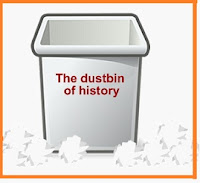9.6: Curation: Disposal of a Collection
At some stage a responsible decision will have to be taken about what to do with a personal artefact collection if the original owner (finder) loses interest, moves house and has nowhere to store it, or dies. Every country in the European Union has developed legislation around cultural heritage, but not all have specific legislation on deaccessioning and disposal even in the cases of public museums let alone private collections. Particularly contentious is the use of funds raised from teh sales of antiquities, can a private collection be treated ethically as a financial asset to be realised in hard times (and to what degree is the landowner that allowed an artefact hunter to take items for free to be compensated if the items are later sold by him or his heirs when there was no prior agreement to do so? This is where documentation of title becomes important). There are views (for example Stevenson 2017) that archaeological antiquities, documented or not, should not be sold on the open market.
Collected material that is discarded, for example because it has lost all of its documentation and is thus no longer usable as a source of information (and of course every effort should be made that such a situation does not arise), should be disposed of in such a way that it is not exposed by erosion and subsequently re-found and assumed to be part of the archaeological record. The PAS record already has a number of such items obviously lost by previous generations of collectors in colonial times.
Hopefully a collection that is well-maintained, properly-documented and presented in suitable packing materials and contains material in line with local collection policies can enter the collection of the local museum or archaeological store. At an early stage, it is imperative that contact is made with such stores to ascertain whether the material is acceptable and what the collector can do while accumulating and ordering the material to make museum accession easier (and that correspondence should be archived for further reference and eventual dispute management). Knoll and Huckell (2019) give some guidance for how this is done in the USA which might be helpful for readers in other countries too. Museums might have requirements how items are to be segregated and packed, documentation may have to be supplied in a specified format compatible with that of the collections as a whole. They are unlikely to have the resources to repack, catalogue and segregate loose material that comes to them from a collector that has not prepared the collection for easy accession and are within their rights to refuse to accept large groups of material that they find unacceptably presented.
Bibliography:
Alice Stevenson 2017, 'Why archaeological antiquities should not be sold on the open market, full stop' the Conversation, July 13, 2017
Michelle K. Knoll and Bruce B. Huckell 2019, ' SAA Guidelines for Preparing Legacy Archaeological Collections for Curation' SAA
 Tamara Kroftova comments:
Tamara Kroftova comments:"It seems to me that, the only proper end of a personal collection of artefact-hunted finds is that they go to an institution where they will be permanently curated together with their associated documentation to be used in research. Any other end is a waste, and the artefacts and their evidence should have been left in the archaeological record, and not irresponsibly ripped out to serve some selfish acquisitive needs."



Comments
Post a Comment